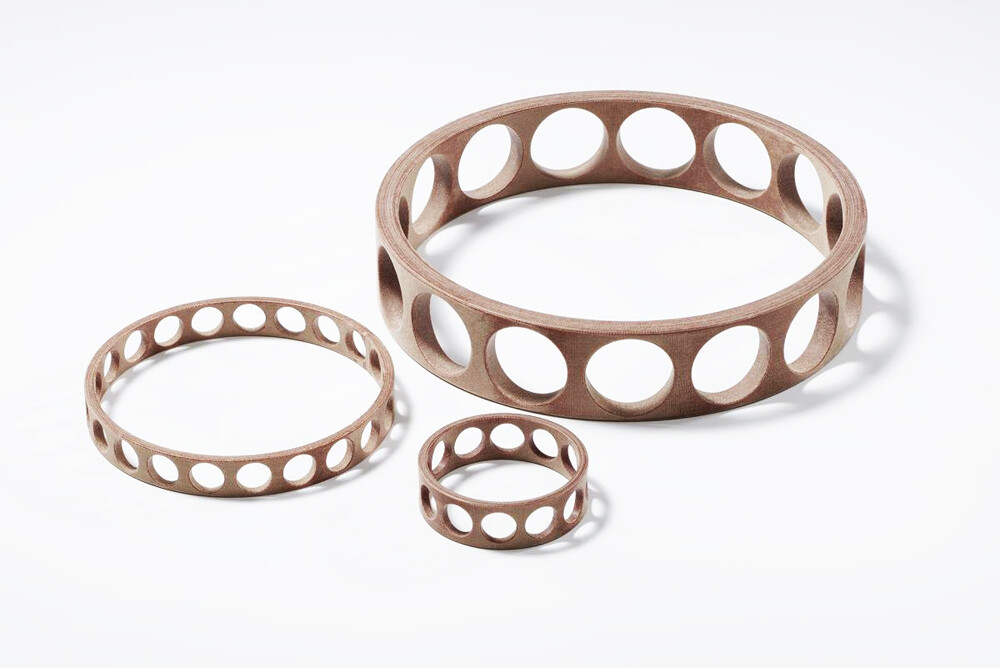
Bearing Manufacturer & Supplier
Specialize in ball bearings, roller bearings, thrust bearings, thin section bearings etc.
Guidelines for Bearing Cage Materials
Generally speaking, the materials for making bearing cages mainly include metal, plastic and composite materials. The bearing cage is an important part of the bearing. Its main function is to support and guide the rolling elements to ensure the normal operation of the bearing. Therefore, the material selection of the bearing cage is crucial, as it must be able to withstand high loads, high-speed operations, and wear and corrosion under various environmental conditions. The bearing cage is directly related to the working performance and service life of the bearing. Therefore, you must have a comprehensive understanding of the material characteristics of various bearing cages. Based on years of experience in manufacturing bearings, Aubearing has summarized the ultimate guide to bearing cage materials.
Table of Contents
ToggleSteel
Steel is a commonly used metal material with good strength, hardness and wear resistance. The bearing cage is made of steel, which has high rigidity and strength and is suitable for use under larger loads and higher speeds. In addition, steel has better corrosion resistance than aluminum alloy and can be used in harsh environments. However, the density of the bearing cage made of steel is relatively high, which easily increases the mass and inertia of the bearing and affects the operating stability and speed of the bearing. Steel cages are mainly cold stamped from 08 and 10 carbon steel sheets; in addition, steel cage materials include 20, 30, 45, 0Cr18Ni9, 1Cr18Ni9Ti, 40CrNiMo, ML15, ML20, etc.

Brass
There are mainly two types of brass cages: stamped and solid. Stamped brass cages are only suitable for small and medium-sized bearing applications. Whether it is brass plate, brass casting or brass forging, they all have high tensile strength, mechanical strength and limit speed, and have a smaller density. It should be noted that the operating temperature of the brass cage should not exceed 300°C. In addition, it should not be used in a working environment containing ammonia. Ammonia causes seasonal breakage of brass.

Aluminum
Aluminum alloy is a metal material that is lightweight, high-strength, corrosion-resistant and has good thermal conductivity. The bearing cage is made of aluminum alloy, which has high rigidity and strength and is suitable for use under larger loads and higher speeds. In addition, the aluminum alloy bearing cage has good thermal conductivity, which can help the bearing dissipate heat and extend its life. However, the corrosion resistance of aluminum alloys is not as good as that of engineering plastics and is easily corroded and oxidized.

Stainless steel
As a material with excellent mechanical properties and corrosion resistance, stainless steel has been increasingly used in bearing cages in recent years. The stainless steel cage can be used for a long time in humid, high temperature, strong acid and alkali environments without rust or corrosion. Stainless steel has high tensile strength, hardness and wear resistance, and can maintain good operating performance under high loads, high speeds and complex motion conditions. Stainless steel has a very small thermal expansion coefficient and can maintain good dimensional stability in high temperature environments.

Polyamide (nylon 66)
The polyamide (nylon 66) cage is manufactured by injection molding. The polyamide (nylon 66) solid cage has high elasticity and light weight, which can ensure that the bearing cage has good sliding and self-lubricating properties. It can withstand vibration and impact, high speed changes or working environments with inclination angles in the inner and outer rings of the bearing; working temperature The range is wider, between -40℃-120℃. However, the use of polyamide nylon cage needs to consider the influence of corrosive components in the lubricant; and the material will dehydrate and become brittle in vacuum.

Phenolic resin plastic
Phenolic resin plastic: Because of its insufficient strength, it is a composite material made of reinforcing fillers such as glass fiber, cloth, and nylon. Its mask contains lubricating oil, so it has high lubrication performance and is suitable for use as a retainer for high-speed rotating bearings and machine tool bearings. rack material.
PTFE
PTFE cage is a plastic with excellent high temperature resistance and corrosion resistance. It is suitable for chemically corrosive and acid-base situations. However, its strength and rigidity are poor, and it is suitable for low load and low speed bearings.

Conclusion
Metal materials dominate the production of bearing cages due to their high strength, high rigidity and good wear resistance. Common metal materials include brass, bronze, stainless steel, etc. Among them, brass and bronze are widely used in the production of cages for small and medium-sized bearings due to their good plasticity, processing properties and friction properties. Stainless steel, because of its excellent corrosion resistance and high temperature performance, is often used in the production of cages for bearings in special environments or with high requirements.
Plastic materials also have certain applications in the production of bearing cages. Plastic materials have the characteristics of light weight, corrosion resistance, and good insulation, and are suitable for some occasions that have high requirements on weight and corrosion resistance. Common plastic materials include polyamide, polyformaldehyde, etc. These materials can be used to produce bearing cages with complex shapes and high precision through processes such as injection molding.
Composite material is a new type of material developed in recent years. It combines the advantages of metal and plastic and has high strength, high rigidity, good wear resistance and corrosion resistance. Therefore, composite materials are gradually being used in the production of bearing cages. Common composite materials include glass fiber reinforced plastics, carbon fiber reinforced plastics, etc. These materials can be used to produce bearing cages with excellent performance through advanced molding processes.


